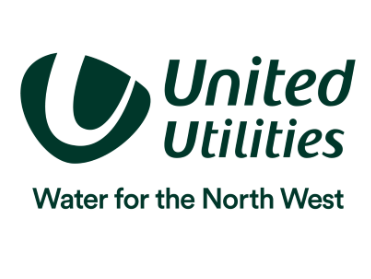An EU-funded €1.4 million-plus research project into carbon nanotubes being led by Professor Michael De Volder at the University of Cambridge’s Institute for Manufacturing has potential commercial applications in the water sector.
Although not as well-known as graphene, carbon nanomaterials show similar properties - stronger than steel, conducting electricity better than copper and heat better than diamonds. Carbon nanotubes (CNTs) also have one great advantage: they can be produced in larger quantities.
Professor De Volder's NanoManufacturing team is currently exploring new ways to manufacture CNTs-based devices with optimal features, potentially opening the way to their broader commercial use.
Image © Michael De Volder
 While wonder material graphene was first isolated in Manchester in 2004, carbon nanotubes (CNTs) have been actively researched since the 1990s. While the cylinders of one or more layers of graphene are already used in nanotechnology, electronics, optics and material science, many engineering applications are still not possible. The difficulty comes when building larger structures such as wires, as CNTs lose their assets to a great extent.
While wonder material graphene was first isolated in Manchester in 2004, carbon nanotubes (CNTs) have been actively researched since the 1990s. While the cylinders of one or more layers of graphene are already used in nanotechnology, electronics, optics and material science, many engineering applications are still not possible. The difficulty comes when building larger structures such as wires, as CNTs lose their assets to a great extent.
Prof. De Volder is aiming to develop new technologies to assemble CNTs into organised, hierarchical superstructures that would retain their exceptional properties. His team brings together engineers, chemists, physicists and material scientists to look at the process at different scales: from material synthesis and surface chemistry at nanoscale, to the form and structure of the material at microscale, up to the larger scale: how to integrate CNTs ‘building blocks’ into 3D all-carbon devices.
The team has already managed to produce microstructured surfaces with tuneable characteristics such as stiffness or strength. To do so, they provoke the CNTs bending as they grow, managing to form controllable complex shapes in 3D. These compound surfaces could also replicate the water-repellent or adhesive features found in the skins of certain plants or animals for example.
Developed in the EU funded HIENA project for Hierarchical Carbon Nanomaterials, the technique is already being used to make biomimetic smart surfaces, as well as chemical microsensors and batteries.
Prof. De Volder’s team is also working on CNTs application for extremely accurate water purifiers and more efficient energy storage systems for electric cars.
Total €1,496,379 costs of the HIENA project, which started in January 2014 and is due to end in December 2018, are fully funded by the European Union.


 Attendees at next month’s National Civils Show, Floodex, National Drainage Show and Waterways Management on 26th and 27th November are set to benefit from an expert speaker line-up and the opportunity to visit a wide range of exhibitors all co-located in one place at Excel, London, one of the UK’s leading international exhibition and convention centres.
Attendees at next month’s National Civils Show, Floodex, National Drainage Show and Waterways Management on 26th and 27th November are set to benefit from an expert speaker line-up and the opportunity to visit a wide range of exhibitors all co-located in one place at Excel, London, one of the UK’s leading international exhibition and convention centres. Tackling leakage is one of the fastest and most cost-effective ways for utilities to bolster water security, writes Ben Crabtree, Product Line Director, Ovarro, revealing how the potential of smart technologies is being demonstrated around the world.
Tackling leakage is one of the fastest and most cost-effective ways for utilities to bolster water security, writes Ben Crabtree, Product Line Director, Ovarro, revealing how the potential of smart technologies is being demonstrated around the world. Balfour Beatty, the UK’s largest construction and infrastructure provider, has delivered exceptional environmental results on the Thames Estuary Asset Management 2100 (TEAM2100) framework, one of the nation’s most ambitious flood defence initiatives.
Balfour Beatty, the UK’s largest construction and infrastructure provider, has delivered exceptional environmental results on the Thames Estuary Asset Management 2100 (TEAM2100) framework, one of the nation’s most ambitious flood defence initiatives.

 Hear how United Utilities is accelerating its investment to reduce spills from storm overflows across the Northwest.
Hear how United Utilities is accelerating its investment to reduce spills from storm overflows across the Northwest. What is to be done about the UK’s failing utilities? Listen to Professor Dieter Helm explore the options to tackle the UK’s failing utilities – Thames Water, the Royal Mail and Network Rail in particular.
What is to be done about the UK’s failing utilities? Listen to Professor Dieter Helm explore the options to tackle the UK’s failing utilities – Thames Water, the Royal Mail and Network Rail in particular.